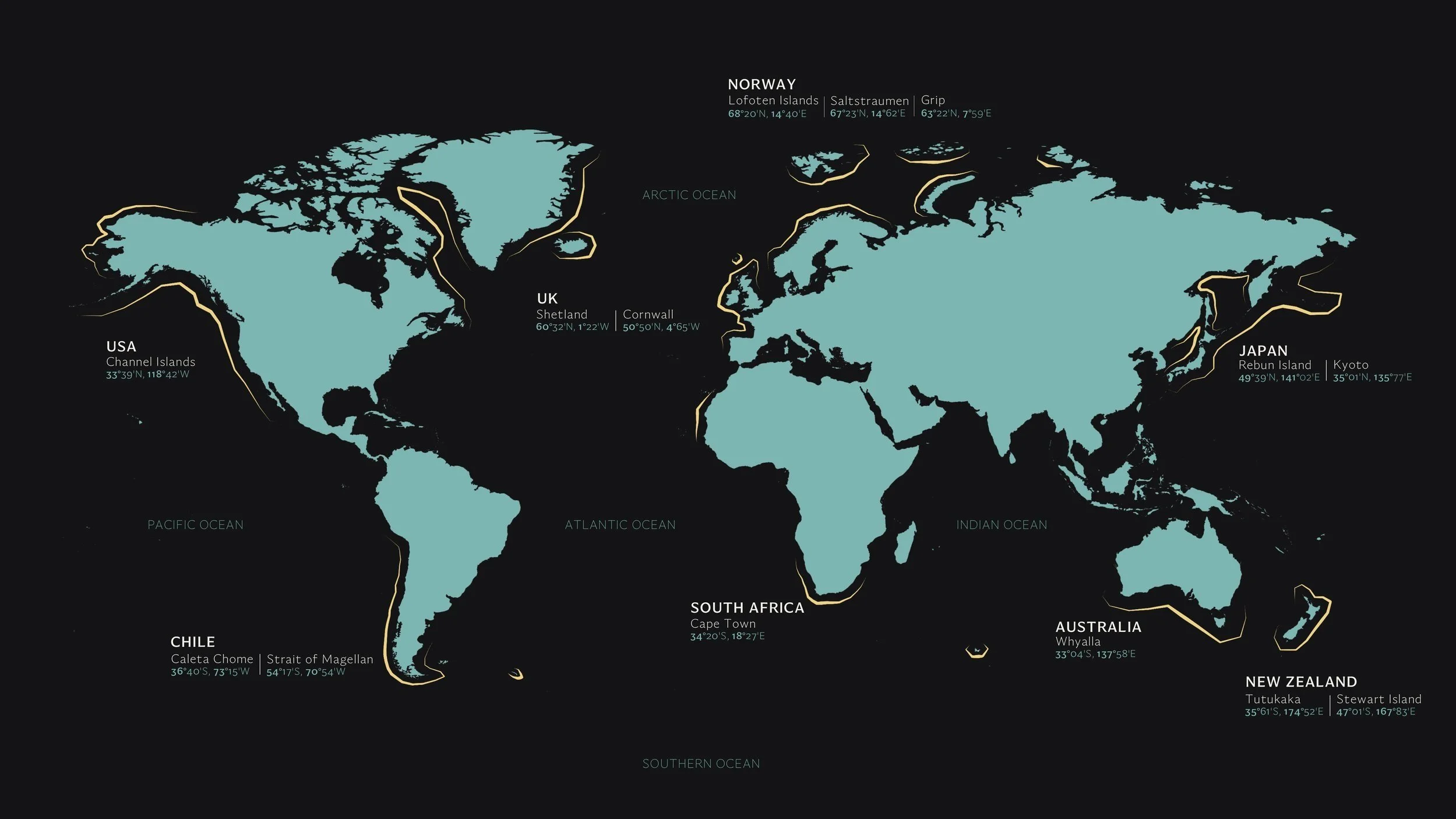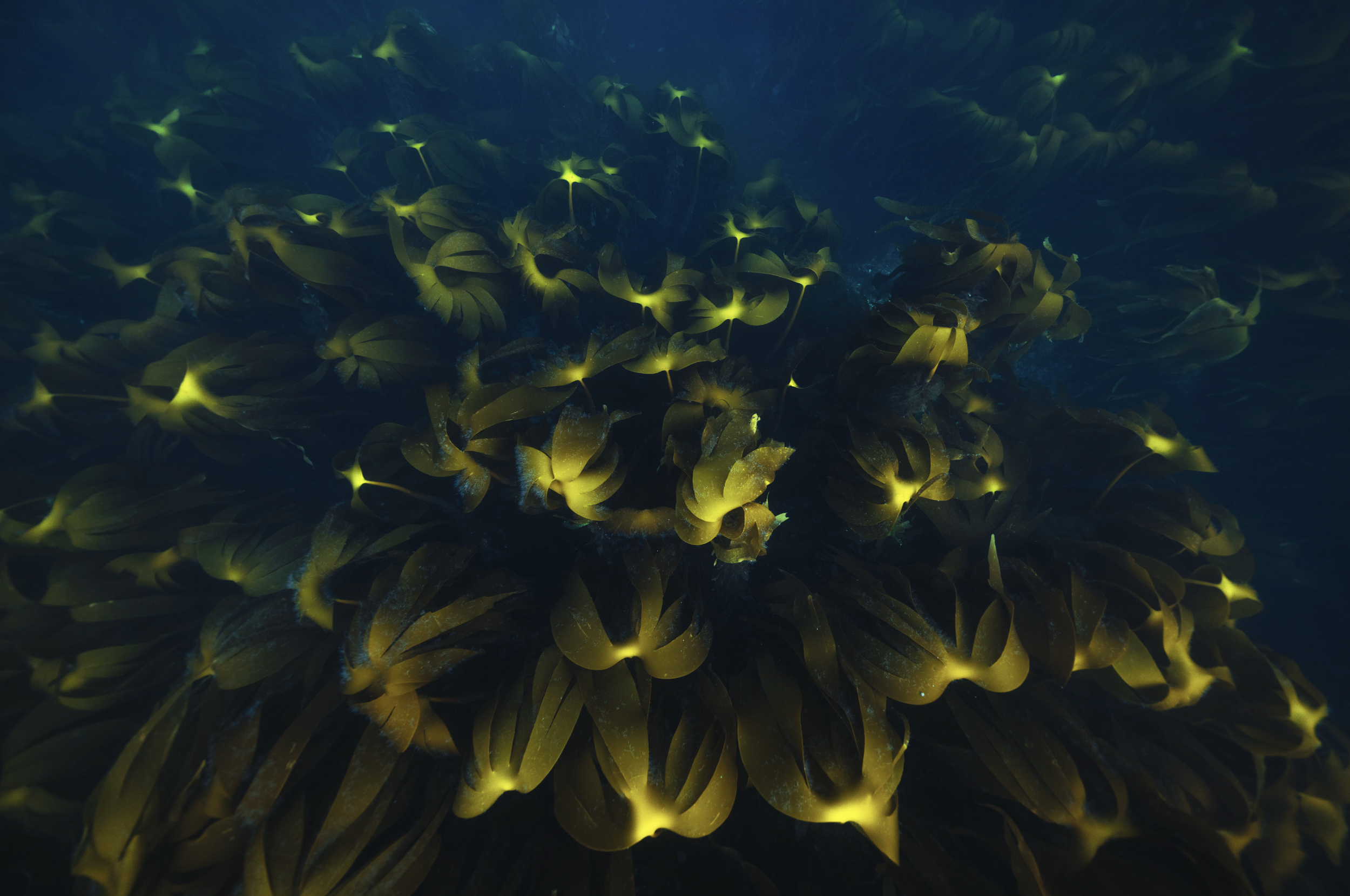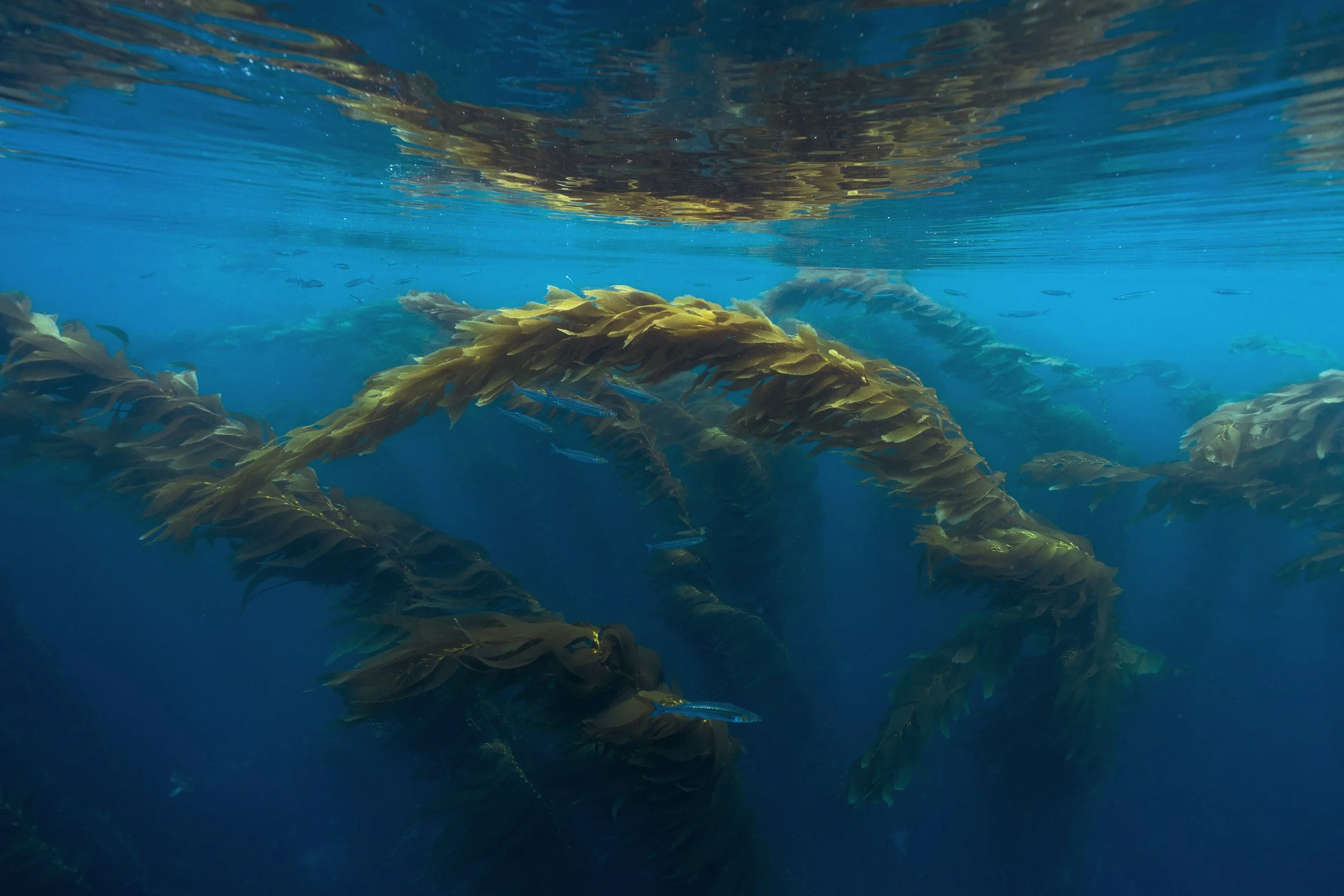
Our work
Great Ocean Forests is a global media advocacy project exploring the world’s ocean forests through photography, film, music, writing, and immersive media.
From Patagonia to Japan, we’ve spent five years free-diving in these forests across six continents — capturing the life within them and working with those who know these waters best.
Our stories are shaped by time spent in the forests themselves: diving beneath their canopies, and documenting how each forest is changing in a warming world.
We’re now preparing an immersive experience, large-format photo book, a short film series, and original musical works to help share these stories more widely. At every step, our work is guided by collaboration, curiosity, and care for the living world.
Expeditions
All of our expeditions are carried out as a small, two-person team — filming, photographing, and carrying all our own gear. We travel light and stay as long as we can, often several weeks at a time, to get to know a place properly.
We choose our locations carefully, planning around seasons that offer the best chance of clear water, stable conditions, and thriving forests.
Each expedition is different, but the approach stays the same: dive every day, learn the rhythm of the forest, and stay open to what the place reveals. We choose to free-dive as most ocean forests grow in shallow water, so this way of working fits the environment.
Local knowledge shapes everything we do. In every place we’ve been, we’ve been helped by people who know these waters well — divers, scientists, harvesters, elders. They’ve helped us see what we might have missed, and often guided where we put our focus.
We’ve worked this way across six continents. It’s slow, low-impact, and collaborative. We’re not trying to capture everything — just to understand enough to tell a good story, and to tell it with care. In the end, it’s the forests that lead. We just try to keep up, and pay attention.
Global Ocean Forest Distribution
Ocean forests are primarily found along the coastlines of temperate regions, between 30° and 60° latitude in both hemispheres. These marine forests wrap the edges of continents in a living fringe, thriving where cold, nutrient-rich waters rise to the surface. The distribution shown here traces the global reach of these ecosystems, highlighting the places we’ve visited as part of the Great Ocean Forests project.
Locations










